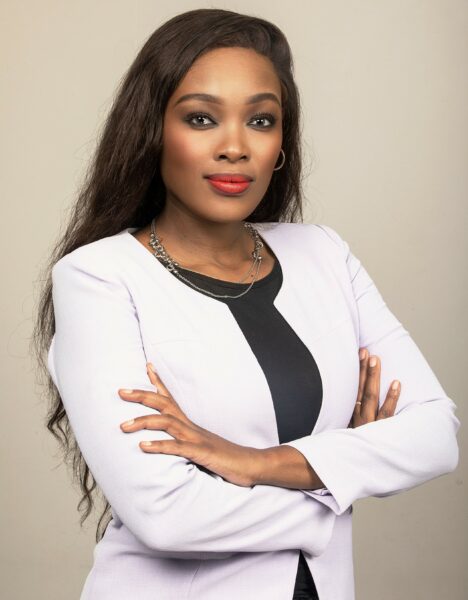Financial Mail Women
The Big Picture
Does a diverse board really impact on the triple bottom line of profit, people and planet? Do women and men across gender, culture, age and race introduce a perspective that positively changes performance and adds zeroes to the bottom line?
According to an international study titled The Global Leadership Forecast, when it comes to gender, the answer is a resounding yes: companies with more than 20% gender diversity at senior level outperform those that lack diversity. The report also showed that there was a 1.7 times increase in leadership strength, 1.4 times more sustained profit growth, and 1.5 times stronger growth culture: numbers that clearly underscore the value of gender diversity.
And a study undertaken by Bersin by Deloitte found that diverse companies across racial and ethnic groups had 2.3 times higher cash flow per employee over and above non-diverse companies.

Deloitte’s 2017 Board Diversity Survey showed that globally, 95% of respondents agreed that their boards needed to seek more candidates with diverse skills and perspectives. In addition, nine out of 10 respondents agreed that gender and racial diversity alone did not produce the diversity required for an organisation to be innovative or disruptive.
In practice, however, little is changing since board recruitment practices are lagging behind these sentiments. The same survey found that boards still rely on traditional candidate criteria: almost 90% of board members see current or retired CEOs as the most effective board members. Boards also source a majority of their candidates from other boards within their own industries, which means a low percentage of woman candidates (16%) and black candidates (19%) – because the process of selecting candidates with board experience means the pool tends to be white and male.
So in the recruitment process, the survey found, board members are often seeking people who tend to be like them – and like management. Such a process may help to reinforce a lack of diversity in perspectives and experiences, as well as (in most companies) in gender and race.
Judi Nwokedi, COO of Tourvest, says it’s essential that boards expand their views to include people from a multitude of backgrounds and beliefs. “If everyone is identical you have the kind of hegemony that doesn’t lead to new outcomes,” says Nwokedi. “The same questions get the same answers and nothing changes.
“In this micro- and macro-economic environment, you need disruption and innovation, and that won’t come from a pool of people who come from the same school, play the same sport and live in the same suburbs. This diversity of thought is informed by class, upbringing, race and sexual preference.”
In a nutshell, says Nwokedi, the conversation has a different narrative when there is diversity. This is a view shared by Odette van der Haar, CEO of the Association for Communication and Advertising, and one of the women instrumental in getting the new Marketing, Advertising and Communication Sector Charter into play.
“True leadership leads by example, and in this rainbow nation with all its colour and flavour, diversity starts with the leaders,” she says. “One of the benefits of this is inclusion, and this creates unity and camaraderie and a happy working environment.”
A 2015 study by economists at the University of Warwick found that happiness led to a 12% spike in productivity, while unhappy workers proved to be 10% less productive. This study is just one of many showing that a happy working environment has a knock-on effect when it comes to productivity, engagement and loyalty.
As Van der Haar points out, if people feel included, then they will work harder and feel proud of being part of a team. A diverse board will see its commitment to diversity trickling downwards through the organisation, impacting positively along the way.
For example, “When young women look up and see companies without female representation at board level, how can they be expected to believe there is a place for women in this business? They have no sense of belonging,” says Mary Bomela, CEO of Mineworkers Investment Company. “Diversity helps set the tone for the rest of the organisation.”
Despite the implementation of B-BBEE, the figures in South Africa are far from optimal. The Commission for Employment Equity’s Annual Report 2016-2017 doesn’t survey boards per se, but it does show that at top management level, white people represent 58.1%, and black people represent 22.1%, which suggests a threefold underrepresentation in relation to distribution in the population as a whole. Disabled people make up just 1.1% of senior management, the report states.
Those trends are unlikely to be very different at board level, as global studies such as the Deloitte survey have shown. “There needs to be a deliberate effort around things like gender, culture and creed,” explains Busisiwe Mavuso, COO of Business Leadership South Africa. “If we are serious about elevating such issues, then our job is far from done.
“It is about having people around the room with whom you are going to have a meaningful discussion, people who are going to ensure that the issues that impact on gender, culture and creed are actually elevated and brought to the forefront so they can receive the necessary attention.”
When it comes to the tip of the triple bottom line triangle – planet – perhaps diversity is the key to unlocking more organisational awareness. For example, Mavuso believes that women are more
inclined to ask questions around the organisation’s obligations to society and the environment, and Van der Haar adds that when a business lives its broader diversity, it becomes part of the values of the company.
The United Nations’ Human Development Report 2011 shows that countries with more female representation in parliament are more likely to focus on improving the environment whereas countries with high gender inequality tend to be more likely to suffer from deforestation, pollution and environmental degradation. This is just one aspect of diversity, and yet it shows that it can play a fundamental part in changing an organisation’s ethos.
Research has proven that diversity, from the board down through the ranks, is a powerful tool for driving the triple bottom line – but there is still much to be done.






 Sign-up and receive the Business Media MAGS newsletter OR SA Mining newsletter straight to your inbox.
Sign-up and receive the Business Media MAGS newsletter OR SA Mining newsletter straight to your inbox.